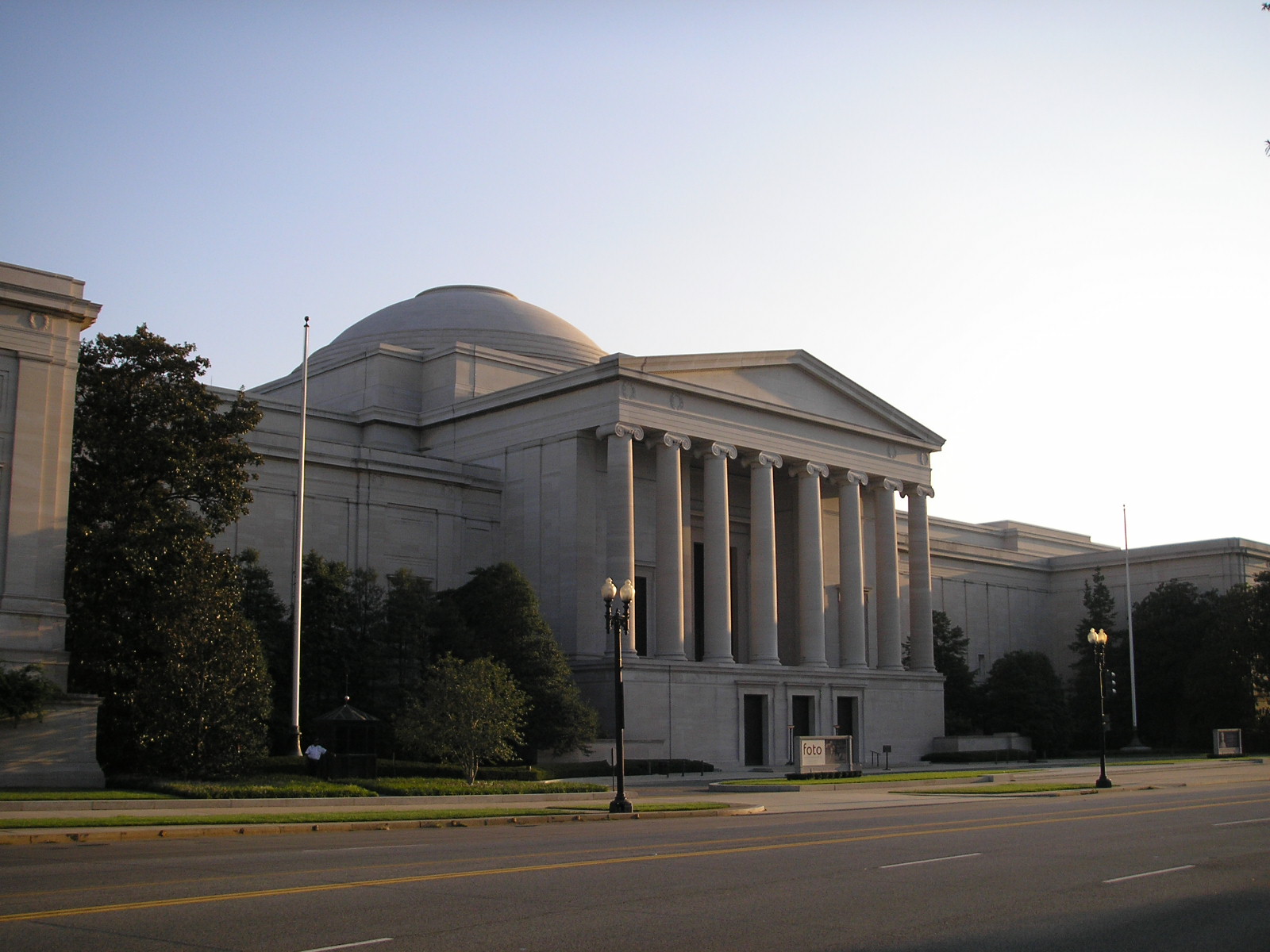Barbara Kruger’s exhibit attracts feminist, anti-capitalist and radical viewers to the Tower of the National Gallery of Art’s East Building in Washington.
This exhibit marks the first in three years in the newly-renovated East Building’s Tower. It features 15 of her most prolific works, ranging in size from covering an entire wall to resting in a small frame.
Kruger said in an interview with Molly Donovan, associate curator of the National Gallery of Art that she is fascinated with the eye, the hand and the profile and how each engages the viewer’s gaze differently.
“Direct address has been the motor of my practice from the very beginning, whether it appears through the gaze of an image looking back at you or whether it is a text forthrightly addressing you.” She calls her artistic process a “dance of fluency and understanding.”
The importance of blank space immediately becomes clear upon walking into the exhibition’s main room. Against a plain white backdrop sits only one or two works per wall. The space allows viewers the time it takes to move their eyes from one image to the next for contemplation.
Though Kruger only worked with black, white and red because she did not have enough money for color prints when she was first starting her work, the minimalist color scheme seems purposeful and is effective.
Kruger employs a black and white photograph as the backdrop to a provocative phrase or word highlighted in red. The characters in her work are not portraits, rather caricatures of media characters and TV personalities.
Much of her work focuses on capitalism and rampant consumerism through “the gaze” of both the image toward the viewer and the viewer looking at the image. This calls into question a two-way arrangement, in which the subject of each piece is both watched and watching.
One of the images is reminiscent of the film A Clockwork Orange, portraying a woman gazing into an eyedropper being squeezed into her eye from an anonymous hand. The inscription says, “The future belongs to those who can see it.”
With each piece, Kruger meticulously chips away at the hard, invisible shell of collective perceptions of worth, beauty and cultural ideals. A book sits open in a glass case in the room adjacent to the main display. On one page is an image of a James Dean-looking man staring hard at nothing coupled with a box of text that says:
“I’m very serious. I’m brilliant and beautiful. Too beautiful for you. I’m looking into the distance, away from you. I’m thinking important thoughts. Things you can’t quite grasp. Someday, you’ll understand.”
Each fragment seems like a separate glance cast by this figure at attendees at a cocktail party, perhaps, as he smokes his cigar in the corner and imagines himself above the rest while he is ironically thinking of nothing at all.
This image and others like it in the exhibit capture a fear of being judged and a desperation to be “special” in individualistic and materialistic American culture.
Much of Kruger’s work was done in the ’80s against the backdrop of the final years of second-wave feminism, a movement that focused largely on reproductive rights, female sexuality, family and the workplace.
In the same vein of feminism of the time, the whole exhibit is overwhelmingly white — white walls, white people in the images and questions of white beauty and culture. Though her work offers a unique, satirical critique of the patriarchy, she leaves no space for the voices of people of color.
Any viewer will likely leave unsettled with a creeping realization of questions they were not asking themselves before but should have been.
The exhibit focuses on Kruger’s most prolific works and is running Sept. 30 2016 — Jan. 22, 2017.



